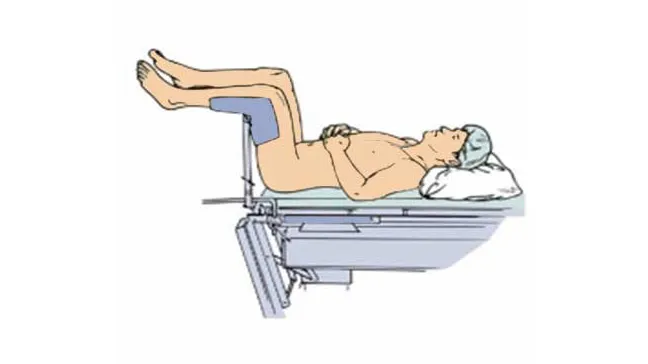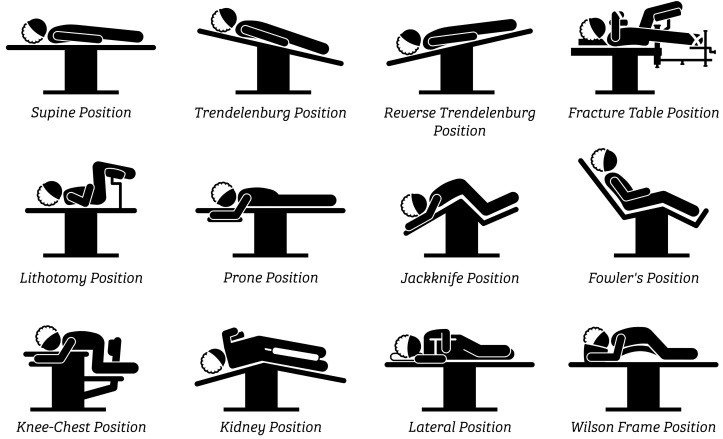Surgical Positioning – This course is designed to understand the concept of community health nursing: nurses’ roles and interventions in family health, school health, occupational health, environmental health, elderly health care, gender issues, disaster management and principles and terminology of epidemiology. The aim of the course is to acquire knowledge and skills in community health nursing.

Surgical Positioning
Surgical positioning is the practice of placing a patient in a particular physical position during surgery. The goal in selecting and adjusting a particular surgical position is to maintain the patient’s safety while allowing access to the surgical site.

Names/Types of Positioning During Surgery:
| Supine position | The most common surgical position. The patient lies with back flat on operating room bed |
| Trendelenburg position | Same as supine position but the upper torso is lowered. |
| Reverse Trendelenburg position | Same as supine but upper torso is raised and legs are lowered. |
| Fracture Table Position | For hip fracture surgery. Upper torso is in supine position with unaffected leg raised. Affected leg is extended with no lower support. The leg is strapped at the ankle and there is padding in the groin to keep pressure on the leg and hip. |
| Lithotomy position | Used for gynecological, anal, and urological procedures. Upper torso is placed in the supine position, legs are raised and secured, arms are extended. |
| Fowler’s position | Begins with patient in supine position. Upper torso is slowly raised to a 90 degree position. |
| Semi-Fowlers position | Lower torso is in supine position and the upper torso is bent at a nearly 85 degree position. The patient’s head is secured by a restraint. |
| Prone position | Patient lies with stomach on the bed. Abdomen can be raised off the bed. |
| Knee-chest position | Similar to the jackknife except the legs are bent at the knee at a 90 degree angle. |
| Lateral position | Also called the side-lying position, it is like the jackknife except the patient is on his or her side. Other similar positions are Lateral chest and Lateral kidney. |
| Lloyd-Davies position | It is a medical term referring to a common position for surgical procedures involving the pelvis and lower abdomen. The majority of colorectal and pelvic surgery is conducted with the patient in the Lloyd- Davis position. |
| Kidney position | The kidney position is much like the lateral position except the patient’s abdomen is placed over a lift in the operating table that bends the body to allow access to the retroperitoneal space. A kidney rest is placed under the patient at the location of the lift. |
| Sims’ position | The Sims’ position is a variation of the left lateral position. The patient is usually awake and helps with the positioning. The patient will roll to his or her left side. Keeping the left leg straight, the patient will slide the left hip back and bend the right leg. This position allows access to the anus. |

Guidelines for Positioning of a Patient on the Operation Table:
- Proper positioning of the patient during the operative period is important to optimize surgical exposure and reduce the risk of positioning-related injuries.
- Understanding the pathophysiologic changes and special considerations associated with each position helps reduce positioning-related morbidity.
- Improper positioning during surgery can lead to spinal cord ischemia, postoperative peripheral neuropathies, muscular sprain injuries, ischemic injury to skin and muscles, and visual loss.
- Perioperative peripheral nerve injuries are the second most common cause of professional liability among anesthesiologists.
- Certain procedures (eg, robotic surgery) may involve unconventional and extreme positioning techniques, necessitating a better understanding of the physiologic consequences of positioning and enhanced vigilance to prevent injury to the patient.
- Male gender, extremes of body habitus, and prolonged hospitalization are risk factors for postoperative peripheral neuropathies.
- A thorough assessment of risk factors for complications related to positioning is an integral part of the preoperative evaluation.
- As part of the informed consent, risks and benefits associated with positioning should be discussed with the patient.
- Description of intraoperative positioning techniques and measures taken to prevent injury should be documented in the anesthetic record.
Read more:
